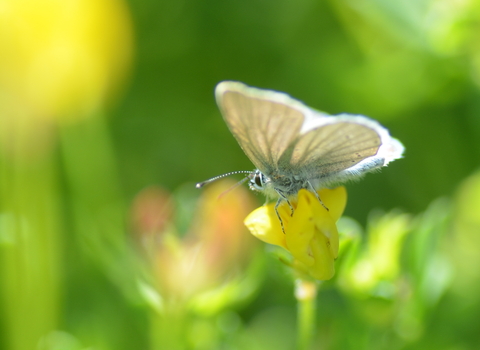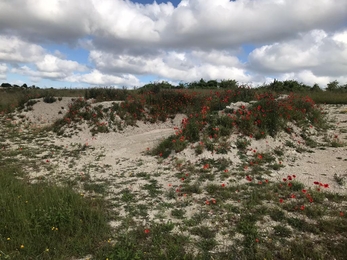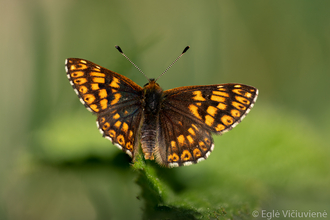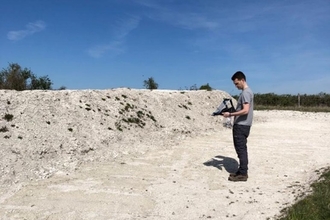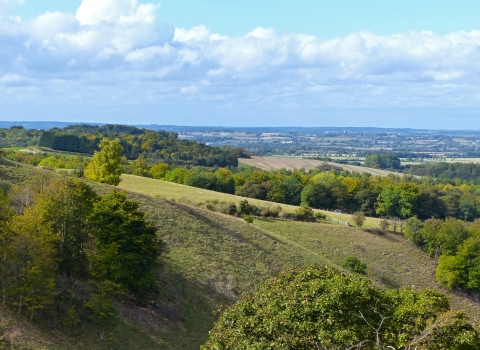Climate change is already having a profound effect on our wildlife - some species are moving northwards in response to a warming climate. Many species, however, are not mobile enough to be able to do this in time or have specialist habitat requirements; this makes them especially vulnerable to climate change.
Our nature reserves play an essential part in supporting these species but our management of these reserves must be adaptable to ensure species continue to thrive. As Evidence Champions, we aim for all our conservation work to be evidence-led with habitat management decisions based on sound science.
As humans, we need relatively large scale changes in a landscape to notice a change in temperature, but for many of our smaller species, such as butterflies, small changes in topography or vegetation structure can make a big difference to the temperatures they experience. By moving between different microclimates, for example, moving from a south-facing slope to a north-facing slope or from open to scrubby habitats, insects can help regulate their body temperature.
Studying the effects of microclimates
No experimental projects have yet investigated the effectiveness of creating microclimates by varying topographies to help species buffer against climate change, nor the best management strategies to achieve this. This highly innovative and important project builds on a collaboration lasting over 15 years between the Wildlife Trust and the University of Cambridge’s Insect Ecology Group, who are at the cutting edge of research in this area.
Banking on Butterflies is one of a suite of projects within the Wildlife Trust movement that are trialling innovative ways to use nature to mitigate and adapt to the effects of climate change. The Nature Based Solutions Fund receives a grant from players of People’s Postcode Lottery, which enabled us to do pre-works monitoring and build four banks at our Totternhoe Quarry nature reserve in Bedfordshire. Complementing this four identical banks were built at our Pegsdon nature reserve, funded by the Cambridge Conservation Initiative (CCI) who are funding a PhD student researching chalk grassland butterflies. These sites support important populations of not only butterflies but also other insects and specialist plants.
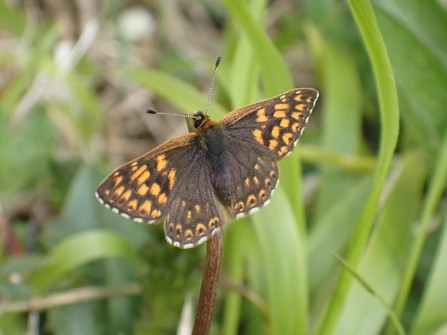
The Duke of Burgundy butterfly is one of the stars of Totternhoe reserve but is vulnerable to climate change as it lives in isolated populations and doesn’t disperse far.
Altering the landscape
The banks are located within flat, ex-arable areas and are 15-metres long and two metres high, with arms creating sheltered valleys on one side. Each bank faces different directions of the compass, to produce more varied temperature conditions for butterflies and other species. We are carrying out extensive monitoring of the site before and after the banks have been installed to assess changes in microclimates, and how this then affects the invertebrates and plants that use the site.
We will also be producing information on the importance of microclimates and guidance on how landowners can create microclimates on their sites.
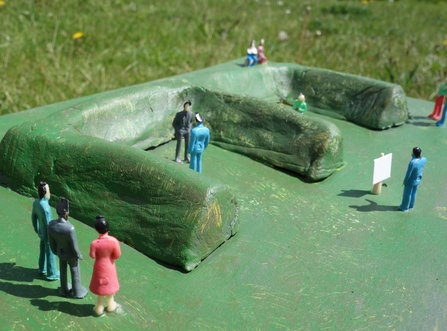
A model showing the scale of the banks
Building the banks
The banks were built in September 2021, with monitoring continuing that autumn and the following years, allowing experimental assessment of whether the banks provide the right conditions for temperature-sensitive species.
From 2022 the banks are being monitored by Matt Hayes, PhD student with the Insect Ecology Group at Cambridge. Matt has repeated all the surveys carried out before the banks were built including looking at the temperature across the banks as well as the butterflies, plants and other invertebrates using them. By working in partnership with the Insect Ecology Group, we are at the cutting edge of research in this area and results can feed straight back into our management of the site.
Banking on Butterflies BBC News (https://www.youtube.com/watch?v=57Rp98b134A)
BBC News report on the project - courtesy of Richard Westcott (September 2021)
Turning up the heat…
The record-breaking heatwave during the summer of 2022 offered the chance for us to collect some completely new and extremely important data. Under normal conditions butterflies are recorded throughout the open parts of the field as the banks are still quite bare, with few caterpillar food plants and nectar sources.
On July 19th 2022 the UK experienced the hottest day ever recorded, with highs exceeding 40°C. This gave a sobering snapshot of what future climates in this country could look like. During these extreme temperatures, Matt headed out to survey the butterfly banks and surrounding field at Pegsdon recording all the butterflies observed.
His findings turned out to be a mix of being both extremely worrying and exciting...
In the midday heat, absolutely no insects were flying. In the open grassland just two butterflies were seen hunkered down in the long grass. In contrast, butterflies were reliably found on the shaded sides of the banks, with each slope harbouring multiple, inactive individuals hiding from the sun. Just outside the survey area there is a patch of woody scrub that provided some additional shade. Looking here Matt found groups of butterflies and other insects, including hoverflies, all resting together amongst the cool vegetation. It seemed that the 40°C temperatures were simply too warm for insects to be active, and they all huddled together, making use of the only shade available.
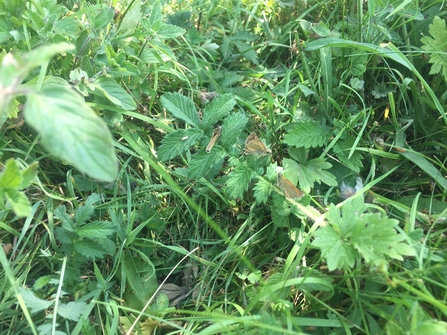
During the extreme temperatures of the 2022 heatwave butterflies sough out the cooler, shaded areas provided by the butterfly banks and vegetation.
Whilst this is a worrying peek into what the future might hold for local wildlife, it shows that the banks do work by providing a refuge from extreme temperatures. This highlights the importance of localised variation in habitat and temperature within sites and across landscapes to allow our local wildlife to survive. As climates continue to change, it will become increasingly important to keep nature reserves varied, managing them for a mix of habitats and temperatures, providing as many options as possible for species struggling to survive in a rapidly changing world.
This research has been published in the Journal of Insect Conservation and is available to read online here.
Advice for land managers
The lessons we are learning from these banks can be applied to other feature on a larger or smaller scale. Our advice to those looking to add features to their land is to make sure you provide a variety of aspects, with south-facing areas for butterflies and others to warm up but also north-facing and shaded areas for them to cool down during heatwaves. The exact size and shape you provide will vary with what land and resources you have available, as well as personal preference.
Expanding on this and thinking of other extreme weather we have been experiencing then areas of vegetation that are more sheltered from strong winds and higher ground or vegetation safe from flooding are also likely to become increasingly important.
If you would be interested in building a set of experimental banks on your land to help us gather more data for this research then please get in touch. The project has already expanded to Wiltshire with the Wiltshire Wildlife Trust and RSPB building their own sets of banks and a fifth set will be appearing on one of our Cambridgeshire reserve soon...
Contact us
For more information, please contact:
Gwen Hitchcock – Senior Monitoring and Research Officer
Additional information


